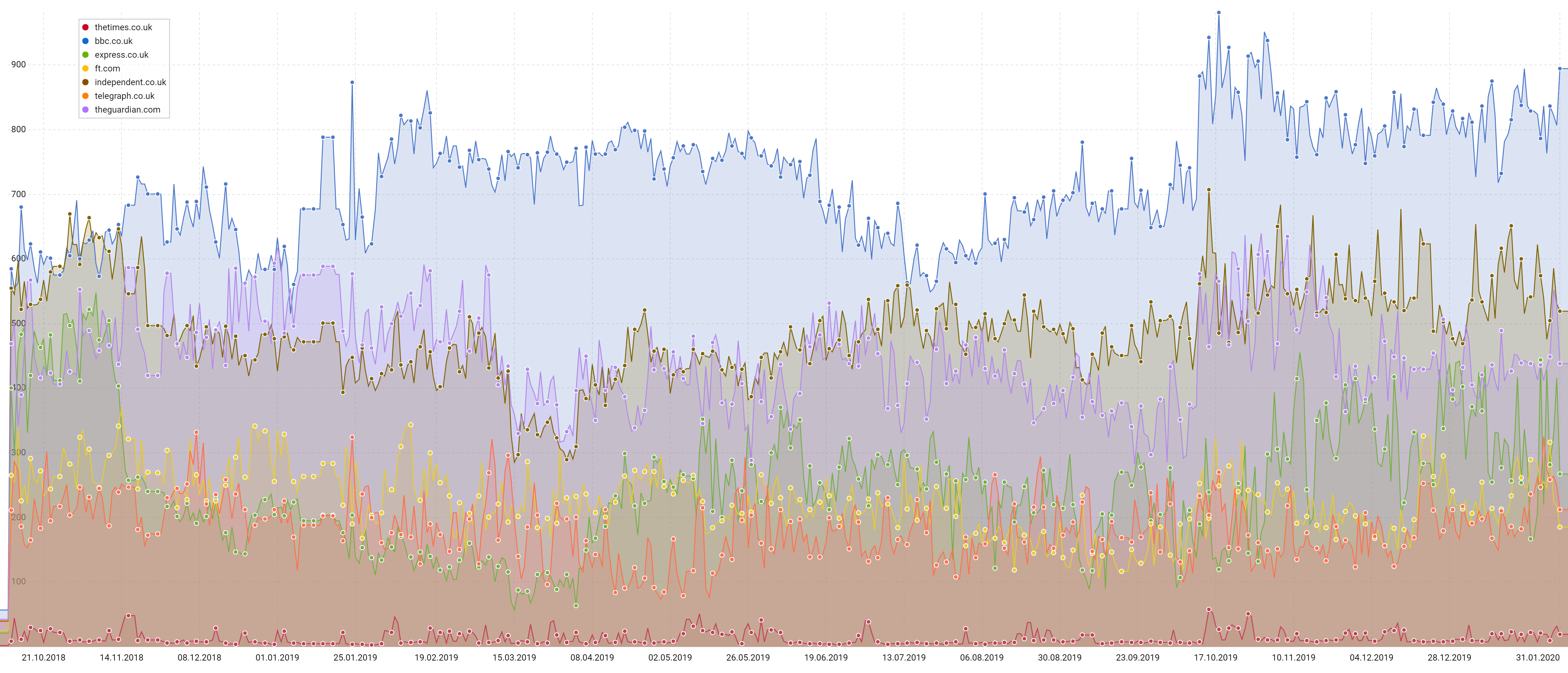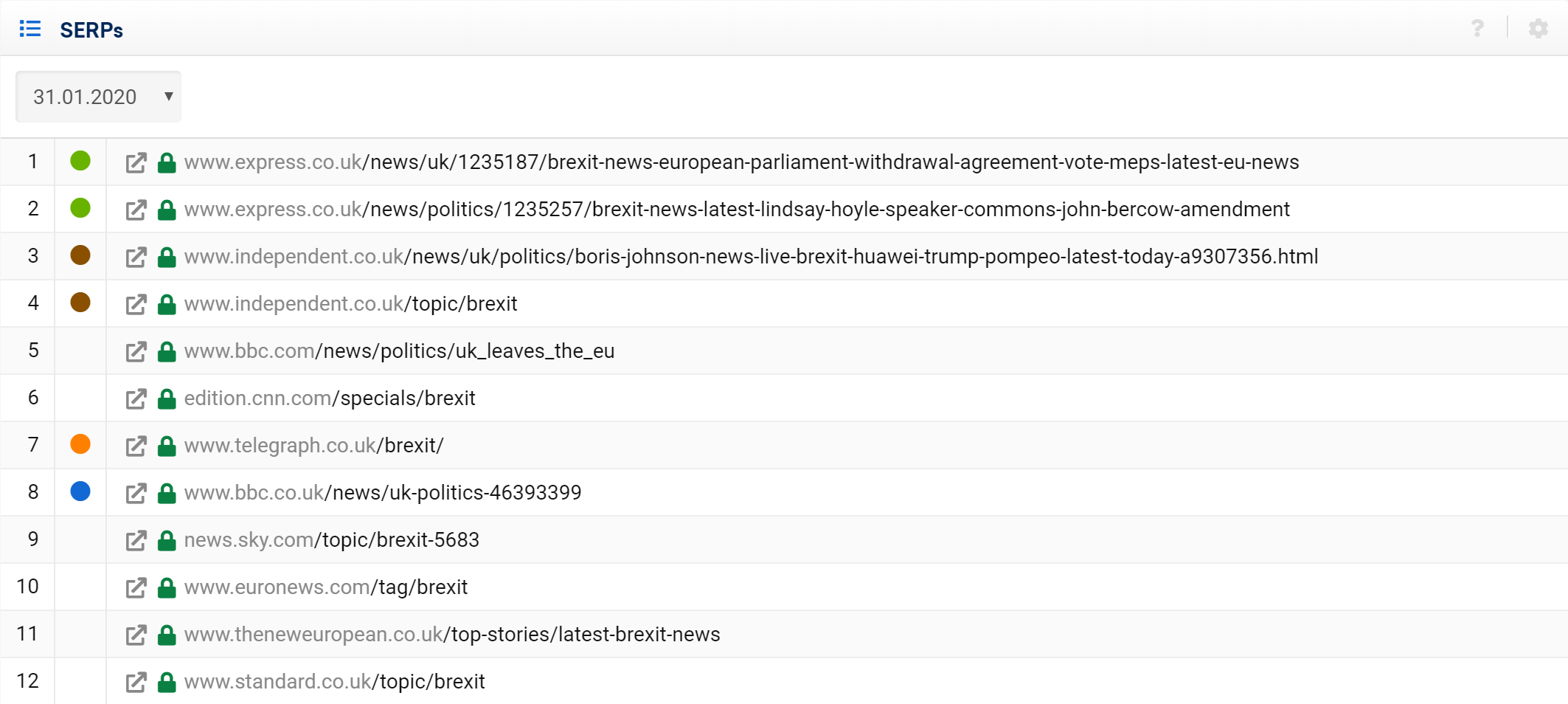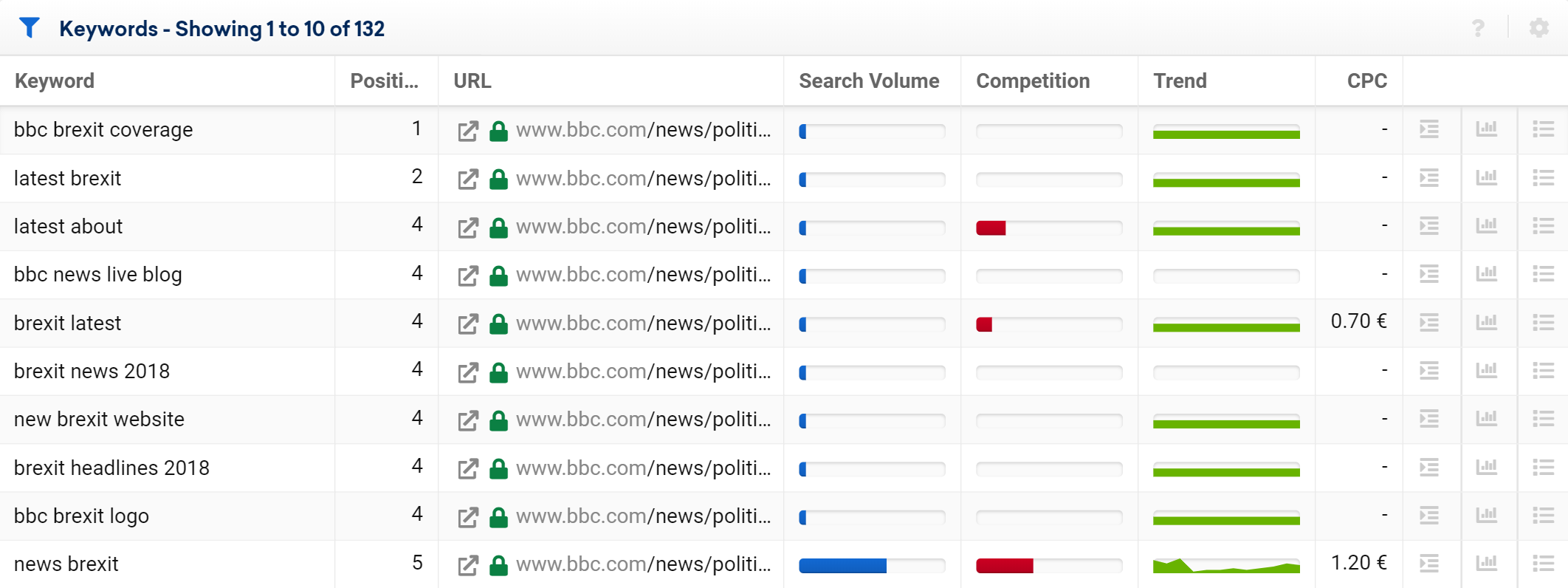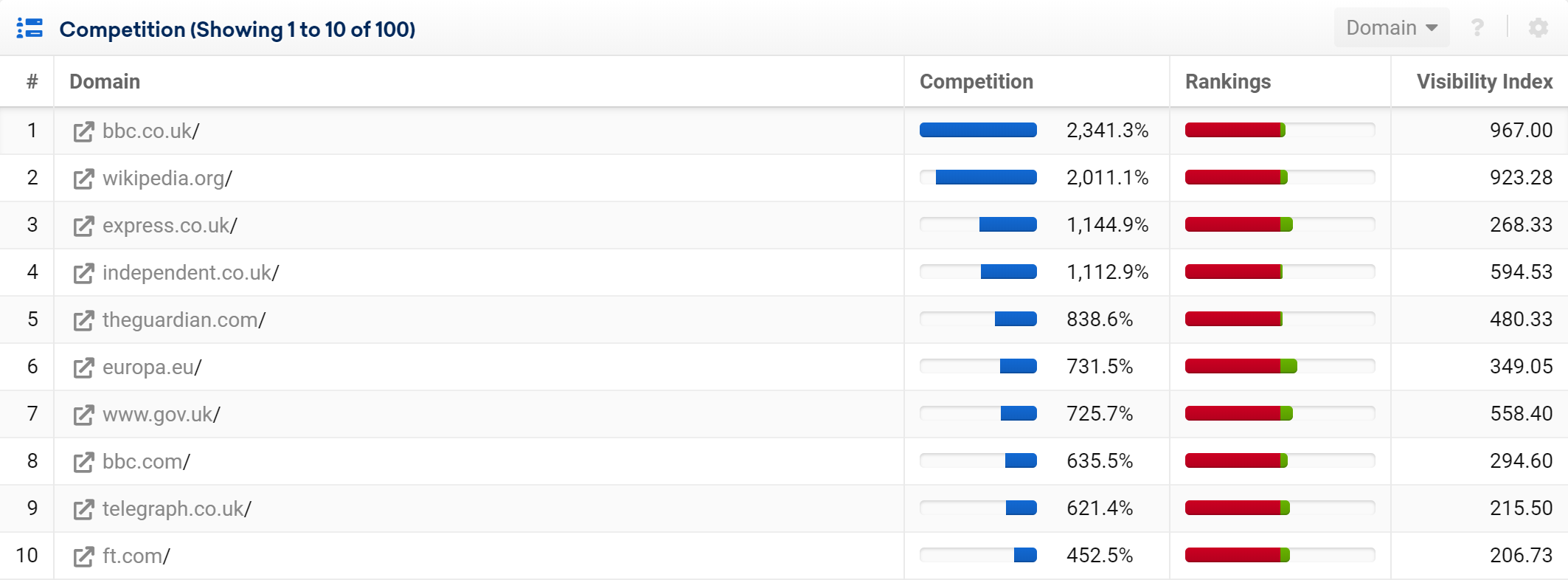Brexit is an important example of why keyword visibility tracking is important. New names, new expressions, new buzzwords and new legal terms mean it’s difficult to find out what’s working in Google Search. In October 2018 I started tracking 35 Brexit keywords and the visibility of 7 news media sites for those keywords in the UK. Here’s the result of that analysis, why visibility tracking is more important than traffic monitoring, how to do it yourself, and how to break out of the keyword tracking bubble.
Brexit Bubble Tracking Results

The chart above shows the visibility of the 7 competing domains over the 15-month time period for the selected keywords. The winner in this sample is bbc.co.uk, by quite a margin.
| Domain | Visibility |
|---|---|
| bbc.co.uk | 894.78 |
| independent.co.uk | 519.03 |
| theguardian.com | 437.75 |
| express.co.uk | 267 |
| telegraph.co.uk | 212.73 |
| ft.com | 185.7 |
| thetimes.co.uk | 19.625 |
bbc.co.uk leads, with the independent.co.uk and the theguardian.com are in position 2 and 3. While bbc.co.uk’s tax-funded position here raises questions about free market competition, more interesting perhaps are the two gated domains. ft.com and thetimes.co.uk use paywals and there’s quite a difference in visibility between the two. Further analysis might reveal some good practices that can be learnt from.
What happens when the traffic stops?
Unless Google makes changes to the way the Brexit search terms are shown, this graph won’t change much in the future. If everyone stopped writing content on the topic and Google’s algorithm didn’t change or refresh, the graph would stay stable. If nobody searches for the topics, no traffic is passed. If people search, traffic starts to flow to the domains that are visible
Brexit is a topic that is impossible to predict traffic for. By analysing visibility, SEOs can know where the domain is positioned, before the traffic starts. Knowing how your competitors are developing is also important, even if there’s no traffic flowing.
Tracking projects
Let’s not forget these are my keywords and I chose the domains. This is a not a scientific study, but it’s very useful. Imagine that you are about to launch a new product-range and you want to track ranking URLs and domains for your important new product names and slick marketing buzzwords? The Optimizer is the best way to track the project.
How to track your bubble
The example here is a project that has been created with the SISTRIX Optimizer tool. The keywords, locations and competitor visibility are calculated after the daily SERP crawl provides the source data. If you would like to learn how to implement your own keyword set, we’ve written a tutorial for you.
Getting useful information from the data
This graph isn’t a search volume or trend analysis, it’s a market share analysis and it’s critically important to remember that. For the user, it exposes domains that are doing the best job for the given group of keywords. It also gathers and archives the Top 100 SERP data than can later be used to view ranking URLs.

This is the most recent SERP (reduced to 12 positions) for “brexit latest news.” The 7 domains under comparison are marked, but there are more URLs here that can be analysed in the SEO module.

By analysing the URL we’ve exposed 132 keywords for which the the URL ranks and while there are branded keywords in there, we’ve started to break out of the bubble. Analysing the URL content will also expose new words, ideas, images, styles and layouts that are clearly working in Google search. You can step through the URLs in the SERPs and create a new keyword list that could be useful in guiding a content writing strategy.

A quicker way to expose ranking content is to use the Competitors feature in the Optimizer. In one click you’ll get a list of the most visible domains, paths and URLs for the subject.
By using the URL-level competitor analysis feature, interesting URLs can be found. They can be immediately analysed, with historical data, in the SEO model. Here are some examples.
- https://europa.eu/european-union/about-eu/institutions-bodies/european-commission_en – 87 keywords in the SEO module
- https://www.gov.uk/government/publications/dover-traffic-assessment-project-tap – ranking for 5 keywords in the SEO module
- https://ukandeu.ac.uk/fact-figures/what-is-the-european-commission/ – ranking for 35 keywords in the SEO module.
Conclusion
We’ve used the Brexit example here to demonstrate how to track a ‘bubble’ of new keywords. The same method can be used for product launches, new trends, news events, new bands, influencer monitoring, celebrity PR tracking and more.
The results will show the visibility of a domain and its competitors within Google Search and competitors, without the need for traffic.
Be aware that you’re dealing with your own keyword set and it might not be representative, but that you can break out of the bubble by analysing data that is generated in the Optimizer.
